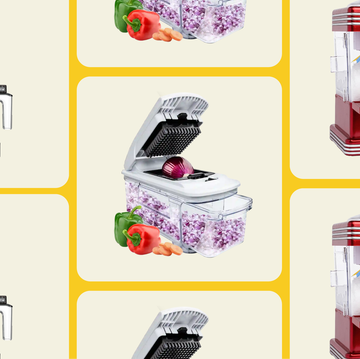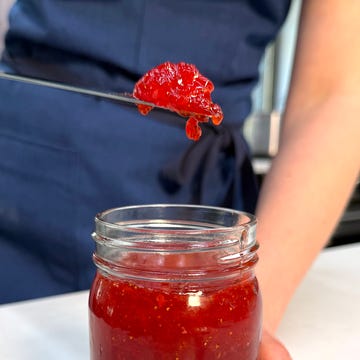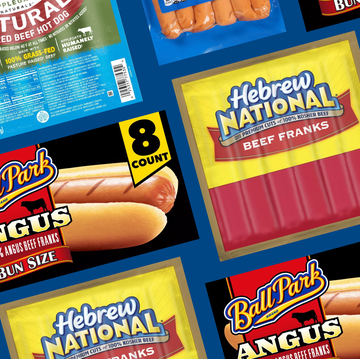MSG has been an ingrediente non grata with American diners for decades, but over the last several years, it’s been making a comeback. Once unjustly accused of making people ill, it has recently gained a following of dedicated supporters who are dispelling those false rumors and championing its use in restaurants and at home.
One of its strongest advocates is Calvin Eng, chef of Chinese-American restaurant Bonnie’s in Brooklyn and author of the recently released cookbook Salt Sugar, MSG. I chatted with Eng about MSG’s stigmatized history, the shifting tide of public opinion, and how we can start using it to up our cooking game at home.
Clearing Out The Controversy
MSG first became “controversial” in 1968, when The New England Journal of Medicine published a letter to the editor suggesting a correlation between MSG and health issues. The author, Dr. Robert Ho Man Kwok, described experiencing headaches and heart palpitations after eating at a Chinese-American restaurant and floated the theory that MSG was the cause.
The letter kicked off widespread phobia of MSG, which was further bolstered by subsequent studies that coined the pseudo-disease “Chinese Restaurant Syndrome.” Dr. Tia Rains, Vice President of Science, Innovation & Corporate Affairs at Ajinomoto Health & Nutrition, says the growth of this public fear was largely due to an “uptick in anti-Asian sentiment within the country,” which occurred during the Vietnam War. “Chinese restaurants in particular were bearing the brunt of it,” she tells Delish.
Years later, the World Health Organization (WHO) and the FDA have debunked those questionable studies and the idea that MSG can pose a health risk. Nonetheless, the American public remained wary—until recently.
Turning Public Opinion
Eng says the last five years have brought a “hard turning point” in how people perceive MSG. Eng believes this is largely due to “younger people like me” and “other restaurateurs who are more educated on the topic” who are willing to be up front about their use of MSG and also “willing to put in the effort to fight the stigma.”
Public education plays a huge role in this. Eng highlights a website and Instagram account called KNOW MSG, which he says is dedicated to “spitting out real facts from scientists and dieticians” about MSG. “They’ve done a great job educating [the public],” Eng shares. And of course, another source of education is Eng’s own cookbook, where Eng freely recommends the use of MSG in home and restaurant kitchens, and teaches people how to use it.
Whether or not you’ve already snagged a copy of Salt, Sugar, MSG, here are some key principles you can learn from the book, as well as tips to start cooking with MSG in your own kitchen.
What Exactly Is MSG, And Why Should I Cook with It?
Short for “monosodium glutamate,” MSG is a sodium salt of glutamic acid, which is naturally found in many foods, including mushrooms, tomatoes, parmesan cheese, seaweed, and dried seafoods. It’s also available in powdered form—that’s where those little bottles of MSG granules come in.
MSG brings umami to any dish it touches—that magical “it factor.” Eng says it's a flavor that you can’t achieve from salt and sugar alone: “It makes you want more of something.”
While you can, of course, bring that umami to a dish through the naturally-occurring MSG in ingredients such as parmesan or tomatoes (why do you think we love pizza so much?) the powdered form is great flavor-booster to stock in your pantry. “It’s the pure MSG flavor,” Eng says. “It adds the umami-ness without the addition of the other ingredients’ flavors or textures. If I’m making eggs, maybe I don’t want to throw mushrooms in there that I have to cook down just to achieve that flavor.” In cases like this, the powder is the way to go.
How To Use MSG
Think of MSG like salt: it’s a flavor enhancer that elevates the taste of any dish, savory or sweet. Like salt, it should be used in small doses and ramped up according to taste as you cook. But make no mistake—MSG is not a replacement for salt. Instead, it should be used in small doses in tandem with all the other flavor elements, including salt, sugar, acid, and spice. “I would never season something with MSG and call it a day,” Eng says. “It would be lacking a lot to balance it out.”
If you’ve never cooked with the powdered MSG before, and are curious to see exactly what it brings to food, Eng recommends running a taste test with two identical bowls of broth or soup: one seasoned with MSG and one without. “You’ll be able to tell the massive difference and what it can do,” he says. Want to experiment with even lower stakes? Eng recommends using it to season popcorn, along with salt, of course!
The next time you taste a slice of pizza and immediately want to grab another, recognize that craveability for what it is: MSG at work. Whether you’re using the powdered form or harnessing its umami through mushrooms or aged cheese, it’s a powerful flavor element that can raise your cooking game.
Looking for a recipe that already calls for the powdered form? Try this Smashed Cucumber Salad. Or, get a copy of Calvin Eng’s Salt, Sugar, MSG which features the ingredient in recipes from cover-to-cover.














